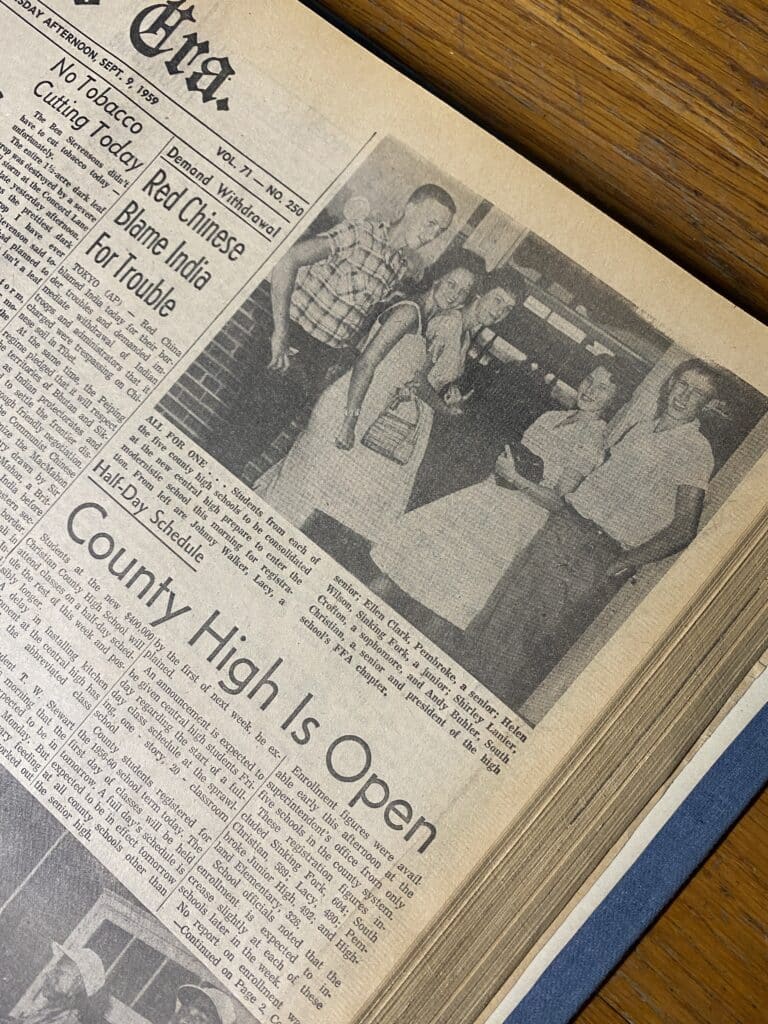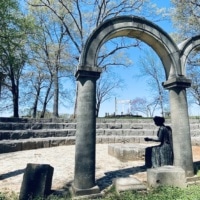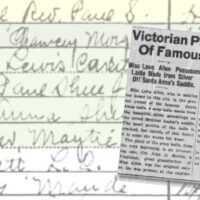Five teenagers pause in a doorway. Each one smiles — smiles of youth, of new friends, of new opportunities. Their clothes are freshly pressed and likely new for the big day on which they are about to embark. Beyond, we catch a glimpse of shadows, but I imagine a long, gleaming hallway that shines so brightly that we can almost see a reflection of these kids’ enthusiasm, possibly mixed with a healthy dose of nerves. A photographer from the newspaper lines them up, releases his shutter, and …
CLICK!

A unifying moment is captured.
This picture was featured on the front page of the Kentucky New Era on Wednesday, Sept. 9, 1959, to mark the monumental occasion of the opening of Christian County High School. Each of the five teenagers in the photo came from a different high school scattered throughout the county system.
The caption reads:
“ALL FOR ONE … Students from each of the five county high schools to be consolidated at the new central high prepare to enter the modernistic school this morning for registration. From left are Johnny Walker, Lacy, a senior; Ellen Clark, Pembroke, a senior; Helen Wilson, Sinking Fork, a junior; Shirley Lanier, Crofton, a sophomore, and Andy Buhler, South Christian, a senior and president of the high school’s FFA chapter.”
I can only imagine what it must have felt like to move into this big, new school. The first students at Christian County High School had more than likely attended the same school since they were 6 years old. At the time, the county school system, functioning as its own entity completely separate from the city school system, had facilities in key population hubs throughout Christian County. These schools served students from first through 12th grade. Class sizes were small, and many kids went to school with the same people until they graduated from high school. The new, consolidated high school must have been a culture shock — to some, at least.
The schools in Crofton, Lacy, Sinking Fork, Pembroke, and South Christian were kind of consolidations in and of themselves. In 1894, there were upwards of 110 schools in the county school system. Katie McDaniel, the superintendent at the time, had to visit each school — from Empire to LaFayette and from Gracey to Fairview — throughout the course of the school year. Can you imagine doing that in a horse and buggy on dirt roads? But that is how big the county school system was. It literally encompassed everything outside the city limits — boundaries much smaller than what we know today.
Over the 60 years or so, many (not all) of those small, one-room schoolhouses combined to form larger schools that served bigger areas. Pembroke had a high school by 1898 and operated in its own independent district for more than 50 years. Crofton, which was also an independent district for a number of years, had a high school beginning in 1913. Sinking Fork opened in 1924, followed by Lacy in 1939, and finally South Christian in 1941.
These schools served their immediate communities and fostered a major sense of sectional pride. And, in spite of their small size, they functioned just like any other high school with academic opportunities, social and professional clubs, and sports. Basketball was their main thing. Apparently, those boys out in the county knew how to hoop.
So, why consolidate these five smaller schools into one facility? Overall, to offer better educational opportunities to our county’s students. At least, that’s what it seems to me. The new school boasted higher quality science labs. The new school offered a broader, more comprehensive curriculum — including foreign language classes to many students for the first time. It also employed a full-time librarian and guidance counselor. The students who created and edited the CCHS 1960 yearbook acknowledged the immense change that was being experienced at all levels in the world, and they put forth that their new school stood “as proof that EDUCATION is alert to the change, and is doing her part to meet the CHALLENGE.”
But there had been challenges. Much like any project of this magnitude, there were stumbling blocks. People were proud of their schools and wanted to maintain that sense of community that they created. If you’d always been a Pembroke Owl or a South Christian Green Dragon, how could you be anything else?
But even more than the sentiment connected to the county schools was the cost involved for constructing a school big enough and updated enough for such a large, modern student body. The 20-classroom building cost $400,000 — doubt $4 million today’s dollars — to build. And remember, this building is not what we call Christian County High School today. This one is what I’ve known as “old Christian County Middle” since the new CCMS was built across Glass Avenue. In a column published on the same day as our picture, New Era journalist Joe Dorris described the building as a “modern but solid building … the school doesn’t go in for frills. Its designers and builders got the most out of the taxpayers’ dollar.”
I had the joy of chatting with one of the young women in this picture last week. Helen Wilson Winstead came by the museum with her daughter Molly to entertain and indulge me as I asked questions about what it was like to be on the forefront of this big change. Her stories all pointed to the opportunities that the students gained with the consolidation. She talked about how much fun it was to have such a good basketball team. (I understand that the starting lineup of the earliest teams at CCHS were composed of one player from each of the five former high schools.) She got the chance to meet people from different parts of the county, even though she admitted that her closest friends remained from Sinking Fork. From her point of view, the consolidation definitely seemed worth it.
I’m curious as to how others felt about coming together into one school. Was the loss of connection and sectional pride greater than the gain of increased curriculum and student population? I would love to hear your stories.
This picture was taken in the very first moments of a major change in our county’s educational history. I’m certain that there were ups and downs and successes and challenges, and that every student didn’t have as positive of an experience as Helen. I’m also certain that this wasn’t the first or the last time that our students, teachers and administrators swerved and shifted in an effort to serve this community better.
In the fall of 1967, our schools completely desegregated, sending all students of all races to school together. In 1971, the city and the county school systems merged into one system to serve all of Hopkinsville and Christian County’s students. More recently, the system has constructed new schools, closed existing schools, and shifted sixth grade from middle to elementary schools. And, of course, now the school board and system are hammering out the details of consolidating our existing two public high schools.
Will that consolidation change the educational opportunities for the students in our community yet again? Of course it will. And, like before, I’m certain that there will be ups and downs and successes and challenges no matter how everything works out. But if we look at this picture — and at the smiles on these excited and expectant teenagers’ faces — we can at least be reminded that, for better or for worse, we have been somewhere similar before and that our students, teachers, faculty and administrators managed to make the most of it.





